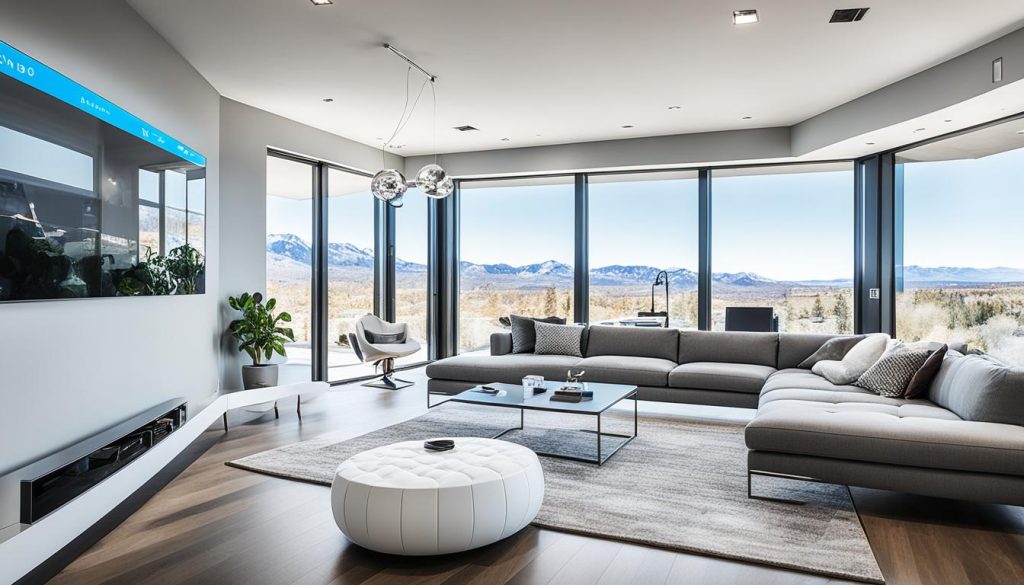Have you ever wished for a smarter, more efficient home? Imagine being able to regulate your home’s temperature, lighting, and safety with the touch of a button. As technology continues to advance, this dream has become a reality with the rise of home automation systems. In fact, the global home automation market is expected to reach $89.9 billion by 2025.
But what exactly is home automation, and how can it benefit you? In this article, we will guide you through the basics of home automation, explore the advantages it offers, and show you how to customize automation to suit your lifestyle.
Are you ready to unlock the full potential of smart home technology? Let’s dive in and discover the world of home automation solutions and services!
Exploring the Basics of Home Automation
In this section, we will delve deeper into the basics of home automation. Home automation refers to the integration of smart technology into your home to automate and control various devices and systems. It offers convenience, comfort, and enhanced security by allowing you to control and monitor your home’s functions remotely.
What is Home Automation?
Home automation encompasses a wide range of smart home technologies that enable you to control and monitor various functions in your home through a centralized system. It involves the use of smart devices and the Internet of Things (IoT) to automate tasks and optimize energy usage. By integrating smart devices and technologies, you can enhance your living experience and simplify your daily routines.
How smart home technology has changed over time
Smart home technology has undergone significant advancements in recent years. Wireless connectivity, voice control, and integration with other devices have transformed the way we interact with our homes. The evolution of smart home technology has made home automation more accessible and user-friendly, with a wide range of devices and systems available to suit different needs and preferences.
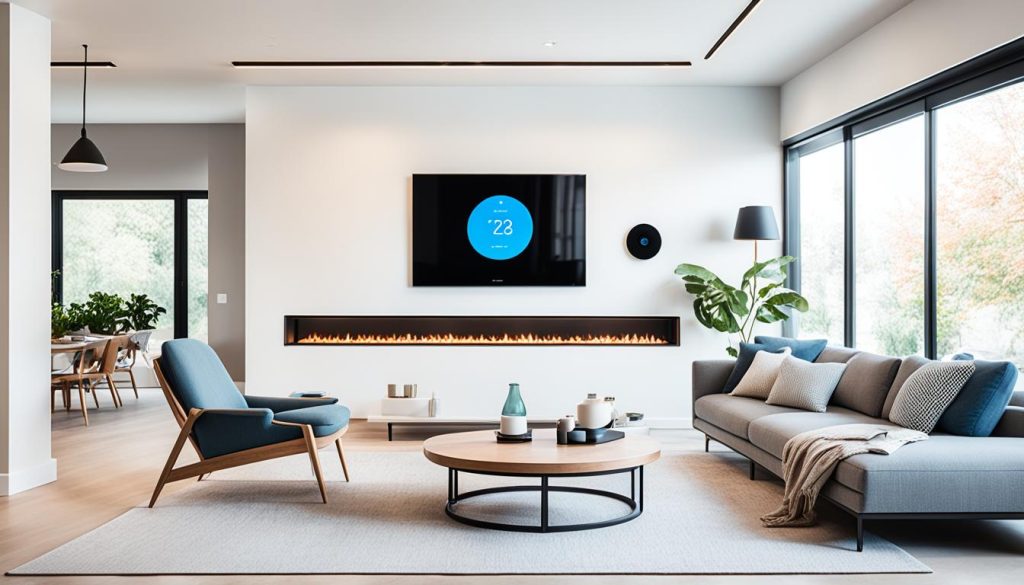
The Core Components of Home Automation Systems
A home automation system consists of various components that work together to automate and control different aspects of your home. Smart devices are the building blocks of home automation, including thermostats, security cameras, lighting controls, and entertainment systems. These devices can be interconnected and controlled through a smart hub or mobile app, providing you with centralized control over your home’s functions.
The Advantages of Smart Home Automation
Smart home automation offers a range of advantages that enhance your daily life. Through automation, you can enjoy convenience by remotely controlling and scheduling tasks, such as adjusting the temperature, turning on/off lights, or unlocking doors. Home automation also improves security by allowing you to monitor your home through security cameras and receive alerts for any suspicious activity. Additionally, automation helps save energy and reduce utility bills by optimizing energy usage based on occupancy and preferences. These benefits contribute to a more comfortable, secure, and efficient living environment.
Convenience is one of the key benefits of smart home automation. With the ability to control various aspects of your home remotely, you can easily adjust settings and perform tasks without having to physically be present. For example, you can turn on the lights and adjust the thermostat before arriving home, ensuring a comfortable environment upon your arrival. This level of control and automation saves time and makes everyday tasks more efficient.
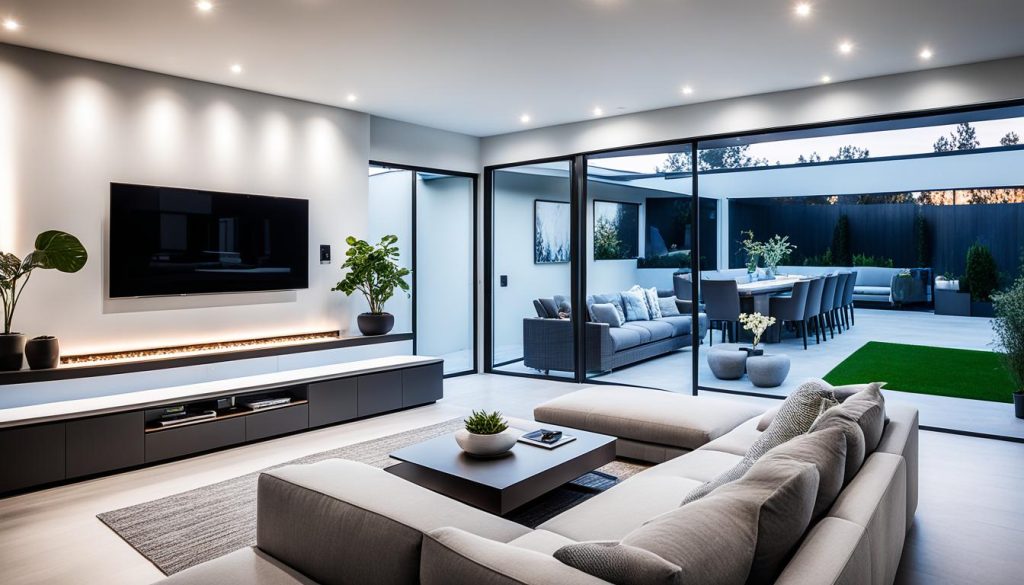
When it comes to security, smart home automation provides peace of mind. With security cameras strategically placed around your home, you can monitor your property in real-time and receive instant alerts on your smartphone in the event of any suspicious activity. This allows you to take immediate action, whether it’s contacting authorities or simply checking on the situation remotely. The added layer of security that smart home automation brings can greatly enhance the safety of your home and loved ones.
Another advantage of smart home automation is its energy efficiency. By optimizing energy usage based on occupancy and preferences, automation systems can help you save on utility bills while reducing your carbon footprint. For example, smart thermostats can learn your temperature preferences and adjust accordingly, ensuring that you’re comfortable while minimizing unnecessary energy consumption. Similarly, automated lighting systems can turn off lights in unoccupied rooms, saving electricity. These energy-saving features not only benefit the environment but also contribute to significant cost savings over time.
Key Home Automation Devices and Their Functions
In this section, we will explore some key home automation devices and their functions.
Smart Thermostats: Controlling Home Temperature
Smart thermostats are innovative devices that allow you to have complete control over your home’s temperature. With smart thermostats, you can easily adjust and schedule the temperature settings to maximize your comfort while also optimizing energy efficiency. By using intuitive mobile apps or voice commands, you can regulate the temperature from anywhere, ensuring your home is always at the right temperature when you arrive.
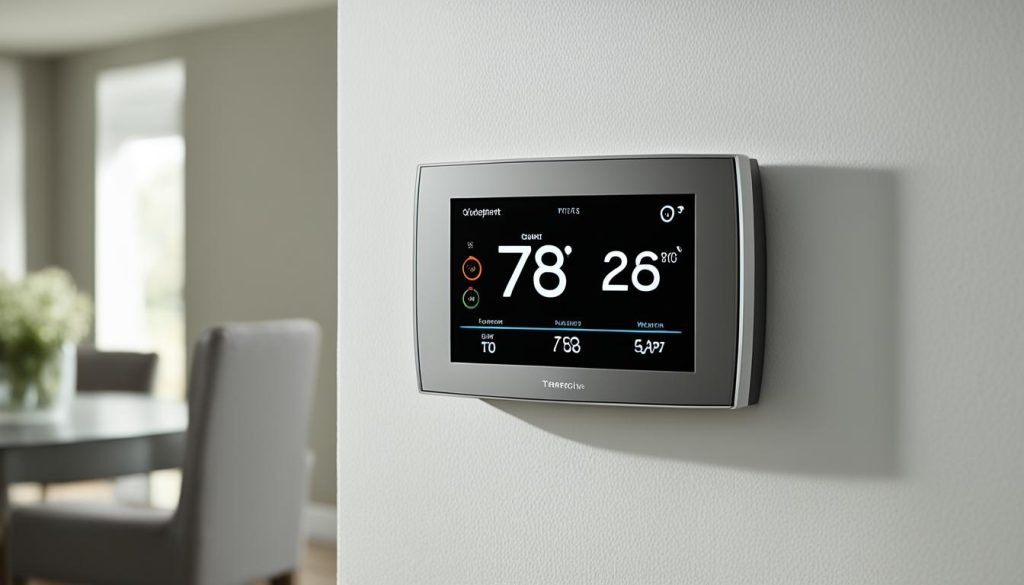
Wireless Security Cameras: Keeping a Visual on Your Home
Wireless security cameras are an essential component of any comprehensive home automation system. These cameras provide visual surveillance both indoors and outdoors, helping you keep an eye on your home even when you’re away. With the ability to access live video feeds remotely, you can monitor your property, check for any suspicious activity, and receive instant notifications in case of any security breaches. Wireless security cameras offer peace of mind and enhanced security for your home and loved ones.
Smart Lighting: Illuminating Your Space Efficiently
Smart lighting systems allow you to take control of your home’s lighting like never before. These systems enable you to adjust the brightness, color, and scheduling of your lights to create the perfect ambiance and save energy. With the convenience of automation, you can set your lights to turn on and off automatically at specific times or in response to certain triggers. Additionally, smart lighting can be integrated with other smart devices, such as motion sensors, to enhance security and provide additional energy savings.
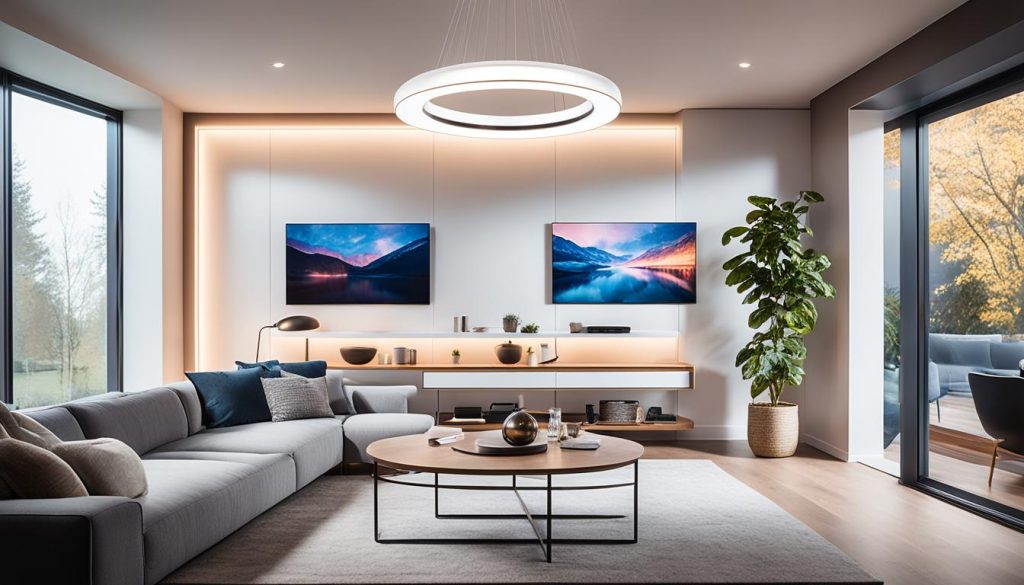
Home Automation Systems: Enhancing Security and Comfort
Home automation systems are essential for enhancing the security and comfort of your home. By integrating home security systems with automation, you can enjoy peace of mind through remote monitoring, video surveillance, and instant alerts for potential threats.
Home Security Systems and Automation
Integrating home security systems with home automation adds an extra layer of protection to your property. With remote monitoring capabilities, you can keep an eye on your home from anywhere, providing you with a sense of security no matter where you are. Video surveillance allows you to always be aware of what’s happening in and around your home, helping to deter potential intruders.
Automated Locks and Alarm Systems
Automated locks and alarm systems offer convenience and enhanced security for your home. Through home automation, you can remotely lock and unlock doors, ensuring that your home is secure even if you forget to lock up before leaving. Additionally, receiving instant notifications of any unauthorized access attempts allows you to take immediate action and protect your property.
The Role of Motion Sensors
Motion sensors play a vital role in home automation systems. These devices detect movement and can trigger various actions, such as turning on lights or activating an alarm. By strategically placing motion sensors throughout your home, you can enhance both the security and convenience of your living space. Motion-activated lighting, for example, can provide an added layer of safety by illuminating your path when you enter a room.
By incorporating home automation systems, including home security systems, automated locks, and motion sensors, you can greatly enhance the security and comfort of your home.
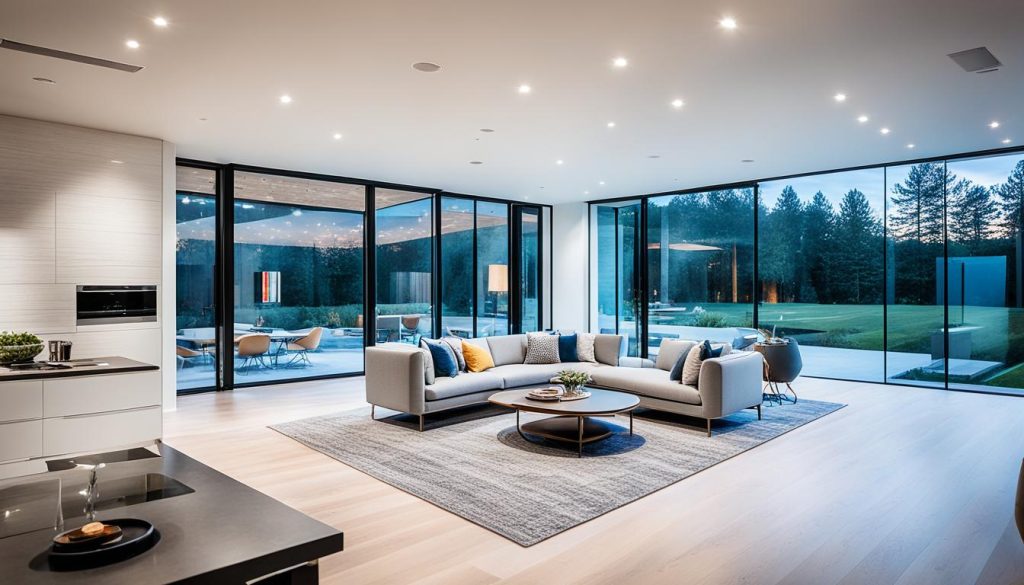
Integrating Voice Control with Home Automation
Voice control is an increasingly popular feature in home automation systems, allowing you to control your smart home devices through simple voice commands. By integrating voice assistants like Alexa, Google Assistant, or Apple HomeKit, you can easily manage various functions of your smart home using only your voice.
With voice control, you can adjust the temperature, dim the lights, play music, or even lock the doors, all without lifting a finger. This hands-free and intuitive control method enhances the overall user experience and adds convenience to managing your smart home.
By incorporating voice control into your home automation system, you can create a seamless and integrated smart home experience. Whether you prefer to use Amazon’s Alexa, Google Assistant, or Apple HomeKit, these voice assistants can understand and execute your voice commands, giving you complete control over your smart home devices.
Step-by-Step Guide to Home Automation Installation
In this section, we will provide a detailed step-by-step guide to help you successfully install your home automation system. Proper planning, choosing the right products, and following installation best practices are essential for a smooth and efficient setup.
Making plans for your home automation system
Before diving into the installation process, it is crucial to plan your home automation system. First, write down your unique goals and needs. Consider which aspects of your home you want to automate, such as lighting, security, or temperature control. Assess the compatibility of your existing devices and systems with home automation technology to ensure seamless integration.
Setting a budget is also important. Determine how much you are willing to invest in your smart home setup, considering both the cost of the devices and any necessary professional assistance.
Selecting Appropriate Home Automation Devices
When selecting home automation products, take into account factors such as functionality, compatibility, and ease of use. Research different brands and models to find the devices that best meet your needs and budget. Look for products that integrate well with your chosen home automation platform and offer the features you desire.
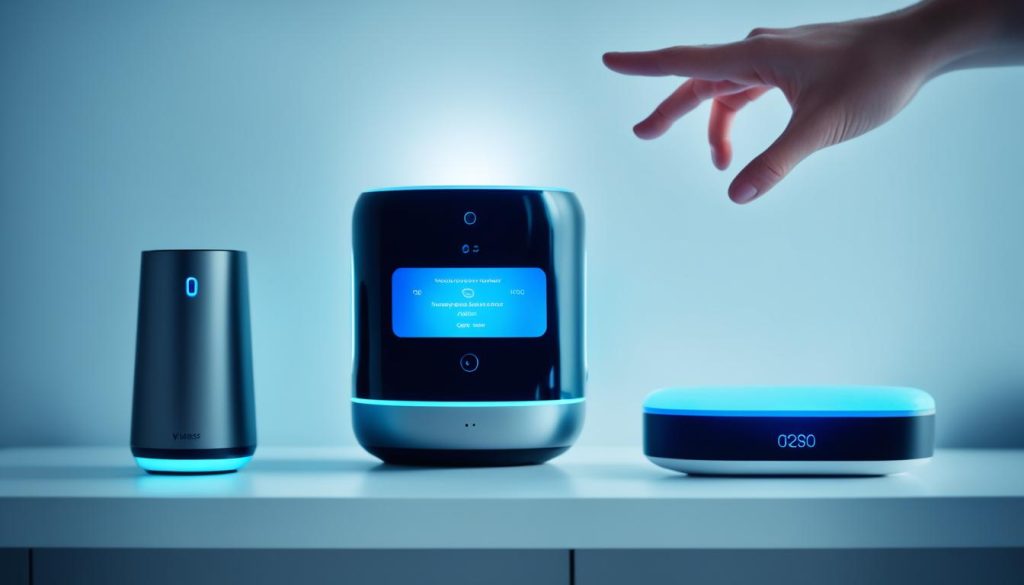
Consider the specific capabilities of each device, such as remote control options, voice command compatibility, and energy efficiency. Read reviews and seek recommendations from reliable sources before making your final decision.
Installation Best Practices
Once you have acquired your home automation products, it is time to proceed with the installation process. Follow these best practices to ensure a successful setup:
- Read the installation guide and follow the manufacturer’s instructions carefully. This will help you understand any specific requirements or considerations for each device.
- Prepare the necessary tools and equipment, such as screwdrivers, wire strippers, and network cables.
- Ensure proper wiring and connections. Follow the recommended wiring diagrams provided by the manufacturer to avoid any issues.
- Test each device individually before integrating them into your home automation system.
- Configure your home automation hub or central control system according to the manufacturer’s instructions.
- Consider hiring a professional installer if you are unsure about any aspect of the installation process.
- If you encounter any issues during installation, consult the troubleshooting section of the user manual or contact customer support for assistance.
By following these installation best practices, you can ensure that your home automation system is properly set up and ready to enhance your daily life.
Configuring Automation for Your Lifestyle
When it comes to home automation, customization is key. It allows you to personalize your smart home automation system according to your lifestyle and preferences. By customizing your system, you can create a tailored experience that meets your specific needs and enhances your daily life.
Customizing the Automation System for Your Smart Home
Personalization is at the core of customizing your home automation system. It involves setting up individual profiles for family members and adjusting settings to suit their preferences. For example, you can customize the temperature, lighting, and entertainment options for each family member, ensuring that everyone feels comfortable and satisfied.
Personalization also extends to creating personalized scenes, which are combinations of multiple actions that can be triggered simultaneously with a single command. For instance, you can create a “Movie Night” scene that dims the lights, closes the curtains, and turns on the TV and sound system. By activating this scene, you can instantly transform your living room into a cozy home theater.
Creating Scenes and Routines for Automated Tasks
Scenes and routines are powerful tools in home automation. They enable you to automate repetitive tasks and schedule them to occur at specific times or in response to certain triggers.
For example, you can create a morning routine that automatically adjusts the thermostat, turns on the lights in your bedroom, starts your coffee machine, and plays your favorite morning playlist. This way, your home can greet you with a personalized and energizing start to your day.
Ideas for Automating Daily Activities
Automation can simplify and streamline your daily activities. Here are some ideas to get you started:
- Morning Routine: Automate tasks such as opening blinds, turning on lights, adjusting temperature, and brewing coffee to kickstart your day.
- Bedtime Routine: Create a routine that gradually dims the lights, sets a comfortable sleep temperature, and activates white noise to help you relax and prepare for a good night’s sleep.
- Energy-Saving Measures: Automate the control of lights, appliances, and thermostats to ensure energy efficiency and reduce your carbon footprint.
By customizing your home automation system and incorporating scenes, routines, and automation into your daily activities, you can enjoy a smart home that truly caters to your lifestyle, providing convenience, comfort, and efficiency.
Popular Home Automation Platforms and How They Compare
When it comes to home automation, there are several popular platforms available, each offering its own ecosystem of compatible devices and features. Some of the leading platforms in the market include Alexa, Google Home, and Apple HomeKit. These platforms have revolutionized the way we interact with our smart homes, making it easier than ever to control and manage various aspects of our daily lives.
Comparing these home automation platforms can help you determine which one best suits your needs and preferences. Let’s take a closer look at these platforms and compare them based on their compatibility, voice control capabilities, device integration, and overall user experience.
Alexa: Developed by Amazon, Alexa has quickly become one of the most popular voice assistants in the market. With Alexa, you can control a wide range of smart devices using voice commands. Alexa is compatible with numerous products and brands, offering a vast selection of options for your smart home. It also integrates seamlessly with other Amazon services, such as Prime Music and Audible, allowing you to enjoy a complete smart home experience.
Google Home: Using Google Assistant as its power source, Google Home excels in offering a user-friendly interface and cutting-edge voice recognition capabilities. It integrates well with other Google services, such as Google Calendar and Google Maps, making it a seamless experience for users. Google Home also offers compatibility with a wide range of smart devices, enabling you to control and automate different aspects of your home with ease.
Apple HomeKit: Designed specifically for Apple users, HomeKit provides a comprehensive and secure ecosystem for controlling your smart home. With HomeKit, you can use Siri voice commands to control compatible devices. Apple places a strong emphasis on privacy and data security, ensuring the protection of your personal information. HomeKit also offers a convenient user interface through the Apple Home app, allowing you to control and manage your smart home devices from your iPhone, iPad, or Apple Watch.
When choosing a home automation platform, it is essential to consider compatibility with your existing devices and the overall user experience. Each platform has its own strengths and features, so take the time to research and compare these options to find the perfect fit for your smart home needs.
Final Thoughts
As we conclude our journey into the world of home automation systems, it is clear that these smart technologies have the potential to revolutionize the way we live. The benefits of a smart home are vast and encompass enhanced comfort, security, and energy efficiency. By automating various tasks and controlling your home through a centralized system, you can enjoy the convenience of managing your home remotely, ensuring peace of mind, and maximizing energy savings.
Looking ahead, the future of home automation holds exciting opportunities. We can expect to see increased integration of artificial intelligence, enabling even smarter and more intuitive systems. Improved voice control will allow for seamless interaction with our smart homes, making it easier to control devices and access information. Furthermore, we can anticipate greater connectivity among devices and systems, creating a more cohesive and efficient smart home ecosystem.
If you are interested in implementing smart home automation, there are a few next steps you can take. Start by researching the available products and platforms to find the best fit for your needs. Consider consulting with experts in the field who can provide guidance and assist with the installation process. Finally, take the time to plan your home automation journey, identifying your priorities and creating a roadmap for gradual implementation.


